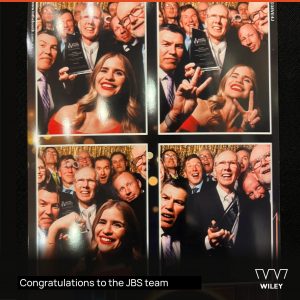The Ag in the Asian Century international export conference held in Toowoomba recently was a huge success highlighted by a fantastic panel of speakers sharing learnings from across the industry. Wiley was proud to be a conference partner of this event which included over 300 delegates and 44 speakers from across Australia, New Zealand and Asia; including representatives from the Chinese E-Commerce giant – JD.com.
The three-day event included industry tours, three networking events, two full days of conference sessions and facilitated meetings between food producers and visiting delegates to discuss market opportunities.
The conference speakers and panel members, including Wiley’s own Michael Matthewson, delivered the very latest knowledge on topics such as investment, technology and innovation, market intelligence, packaging, branding, social media, Free Trade Agreements and supply and logistics.

Transport & Logistics Panel – Michael Matthewson, Wiley; Raymond Ng, Reach 24H; John Wagner, Wagner Global & John Warda, Emerald Grain.
Key Conference Themes
A number of major themes resonated across the three day event and the myriad of speakers and subjects. These included:
- The opportunities in Asia are vast for our food and agribusiness industries
- Food safety is a big issue in Asia and a big opportunity for Australia
- To develop and engage in business in Asia you need to align with Provincial Government
– the two are intrinsically linked - Each province in China needs to be treated as a separate country
The opportunities in Asia are vast for our food and agribusiness industries
All of the speakers, no matter which sector of Agribusiness they preside in, agreed that the opportunities in Asia, in the coming years, are vast and Australia is in a unique position to take advantage of these. Our close proximity, ties and long experience of dealing with Asia combined with a reputation for quality products gives us a unique opportunity to differentiate and position our products compared to the rest of the world.
Patrick Vizzone from NAB Agribusiness illustrated some of these opportunities within the meat industry in particular; stating that beef was a “one- way bet” as current consumption rates in Asia will increase until they are in line with the consumption rates of more developed countries.
Food safety is a big issue in Asia and a big opportunity for Australia
Food safety continues to be one of the biggest issues for Asian consumers due to the recent and prolific scandals across a variety of food sectors. The Chinese government in particular constantly has to balance the benefits and risks of domestic supply with imported products.
Australian brands have an advantage in Asia as they are renowned for their “clean and green” qualities and as such are considered a safer option for many consumers. As highlighted in the following charts from two separate presentations, Australia is ranked second in the world behind the USA on the EIU Food Safety & Quality Index and the generally high ranking of Australian brands is consistent across all sectors.
A key component of providing “clean and green” products is to ensure the quality of the product through the supply chain process. This was discussed in detail during the Transport and Logistics panel session which included John Wagner, Chairman of Wagner Global Services and Michael Matthewson, Wiley’s Business Operations Manager – Toowoomba.
“Maintaining the value of the product through the supply chain is critical”, Mr Matthewson stated when asked about the value of extending the shelf-life of a product. “It’s one thing to have a great product but it still needs to be handled with care when it gets to its destination”.
To develop and engage in business in Asia you need to align with provincial Government – the two are intrinsically linked
To conduct business successfully in Asia you need to build long-term relationships and align with local government agencies. As James Campbell the new CEO of Sangers Australia said: “You will live and die by your relationships”.
This trend is particularly evident in China where 300, or 60%, of the top 500 companies are State Owned Enterprises (SOE). These SOE’s account for 80% of China’s operating revenues and 91% of total assets.
Aligning and working with the right government agencies is also intrinsic to getting your product to market. China has many different levels of regulations which all need to be met in order to get final approval for importation.
Raymond Ng from 24H Reach referred to the following regulations as the “Great Wall of China”:
- CNCA Registration
- Product Standards
- Labelling Standards
- Testing Standards
- CIQ inspection
Treat each province in China as a separate country
China is one vast nation in theory but in practice each province is so large and so different that they should be treated as different countries. Provinces can not only differ by custom and language but also by regulations and standards meaning that what passes regulation in one province may not pass regulation in another.
China’s blacklisted importation list is the best example of the consequences of not understanding the differences in regulations between provinces. Despite Australia generally considered as one of the best quality choices for consumers, Australia is ranked 8th in the world on China’s blacklisted importation list. The most common causes of the 116 cases noted in the graph below were related to non-compliance of some of the provincial regulations outlined in the previous point.
In addition to taking into consideration the different regulations, customs and language between Chinese provinces it is also important to note that GDP can differ vastly between one province and the next. In fact, some provinces in China are so large that they make the equivalent GDP of some developed nations.
Wiley would like to thank TSBE for putting on a truly insightful event from which we have gained another level of understanding about the reality of the Asian markets and our potential roles therein. Topped off by fantastic relationship building with both existing colleagues and some invaluable new ones.
Dr Ben Lyons, Chief Operating Officer at TSBE, published his wrap-up of the entire event on Linkedin. Read it here.









